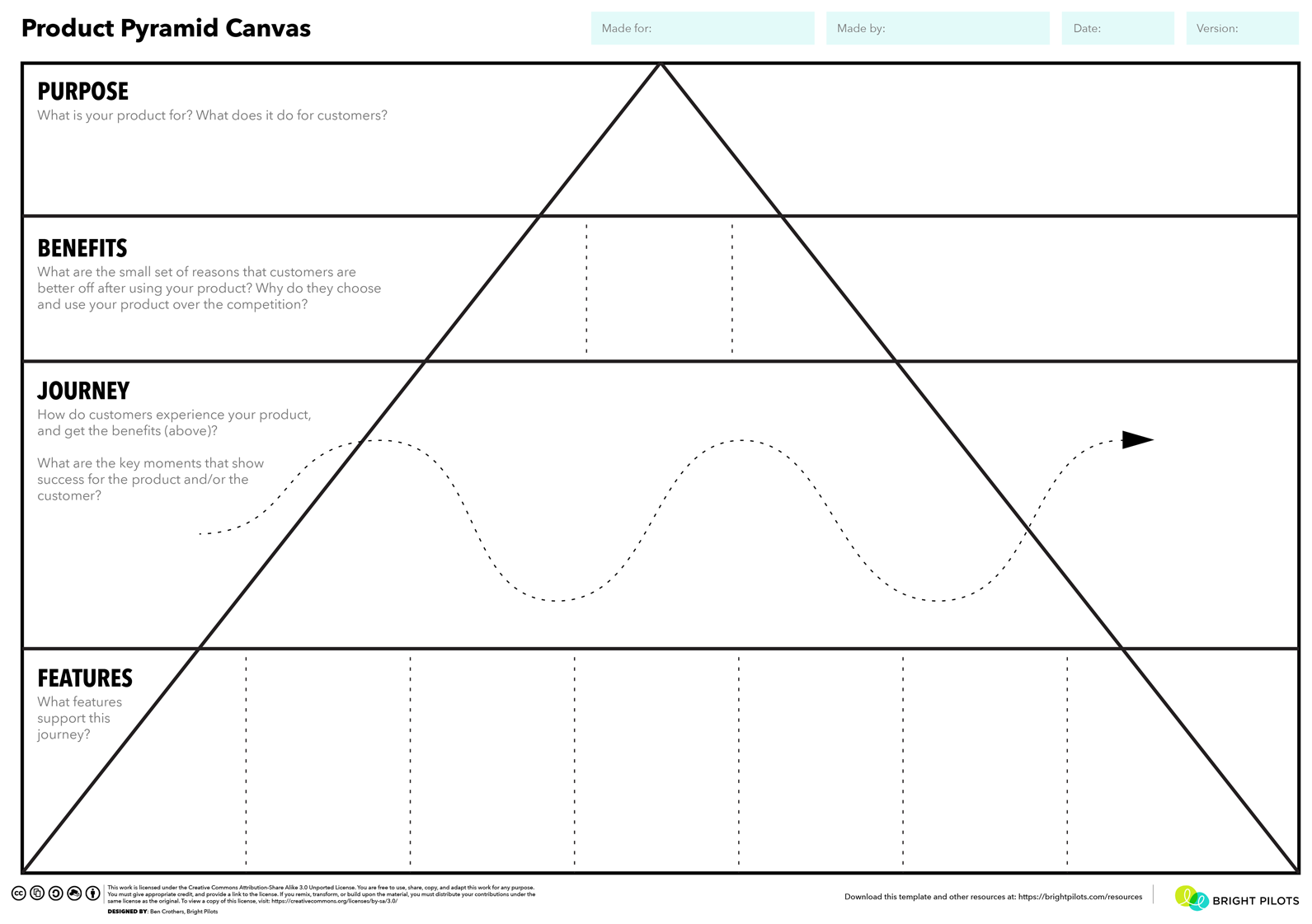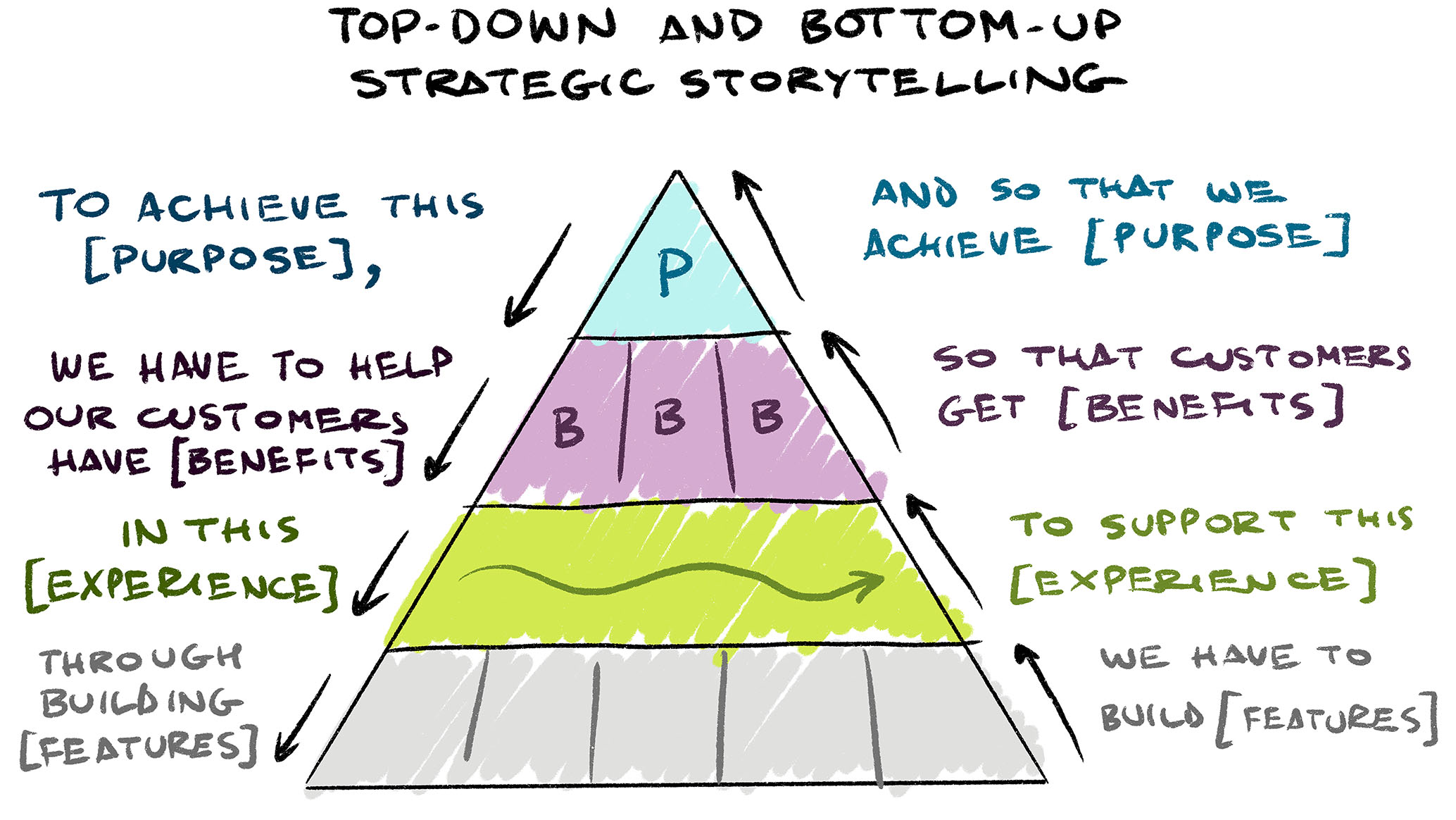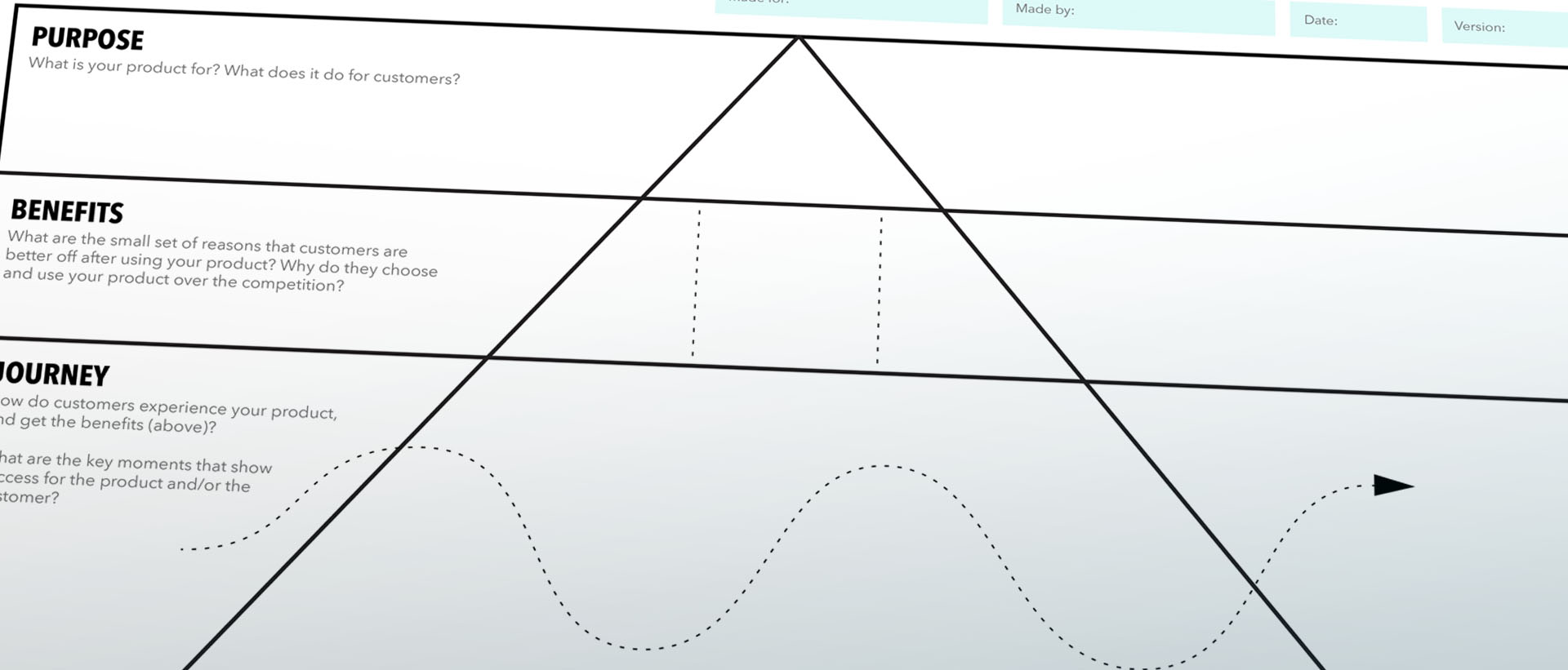Do you have a gap in your product strategy?
It’s easy to get overwhelmed with all the various assets needed in developing a product or service. There’s the value proposition statement, some success metrics, details about ideal customers, their goals and journeys, and of course a roadmap and OKRs (or similar).
And while we might struggle to keep up with all this detail, it’s still no replacement for the actual strategy of the product or service: what is unique to to it that you know customers want, that creates value for both them and you as a business, that you can execute on better and/or faster than others?.
I’ve worked with loads of product and service teams, and often found this scenario, which is why I created the Product Pyramid Canvas. I kept seeing that teams needed a way to get a succinct view on how all the essential pieces fit together, so that they could diagnose gaps, see connections, and tell better strategy stories, to themselves, to stakeholders, to customers, and to investors.
See the full picture
The Product Pyramid Canvas lets you and your team see and connect several of these important elements as one cohesive unit:

You can download the free PDF of the Product Pyramid Canvas here
It unites several important elements of product strategy into one map, to help with strategy communication, business cases, and prioritisation:
- Purpose - What does your product (or feature, service or other offering) do for customers? What value does it create, for customers, and for the business? This is the smallest area of the canvas for a reason; it forces teams to express this is a short succinct sentence.
- Benefits - What are the benefits to customers for using this? Why/how are they better off? Why do they choose this over competitor offerings? Aim for up to three distinct benefits. Refer to this great set of elements of value for inspiration.
- Journey - How do customers experience your offering, to get these benefits? And what are the key moments that show success for the product and for the user?
- Features - What particular features are important to show, that support this journey (and provide these benefits), at various stages?
Each layer supports the layer above it. Once you have mapped all this, take a critical look at how the layers relate.
How to use the Product Pyramid Canvas
You can use this canvas either individually (especially if you’re the Product Manager), or as a team, to work out each layer, and how the layers relate to one another. It really helps to have the right decision makers and/or subject matter experts in the room for this.
You can start at any layer (the Journey layer is often the easiest), but it does help to start at the top, and work your way down. For each layer, discuss, distill and write your answers to the questions for each row.
Once you have some rich detail captured on the canvas, you can use it as a bit of diagnostic and analysis device:
- Are there any gaps or assumptions, that need customer research?
- Are there great benefits in your product, but there’s something lumpy in the journey that prevents (or reduces) the ability to realise these benefits?
- How does each feature support the customer journey, and at what stage(s)?
Every time I use this canvas with groups, they always find new ways of using it, to gain insight, clarity, and alignment about their product or service, which is really cool to see.
Use it for strategic storytelling
Often the hardest thing is trying to tell a succinct story, argument, or rationale about a product, feature, process, or service, to get stakeholder buy-in. This canvas comes in handy for that, by constructing top-down or bottom-up arguments using each of the layers.

You can download the free PDF of the Product Pyramid Canvas here
